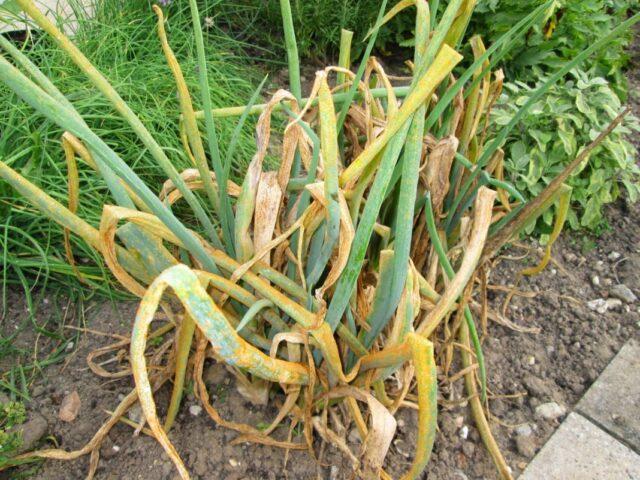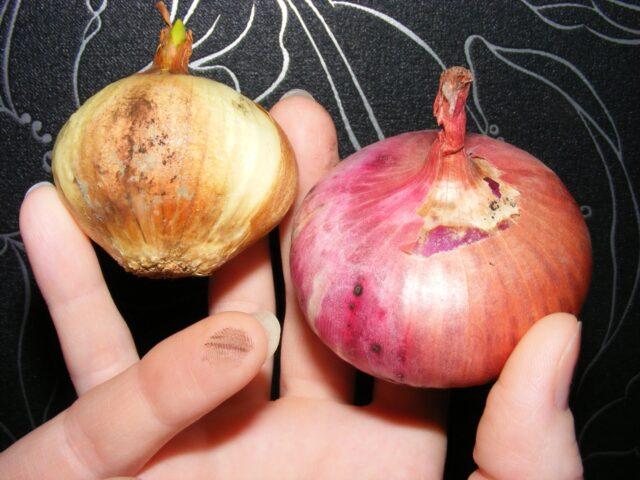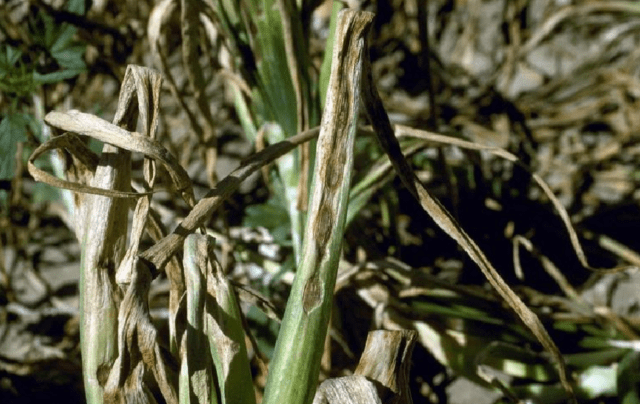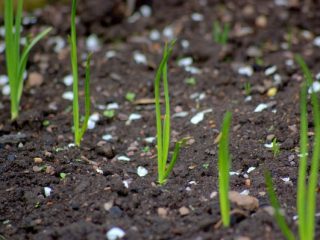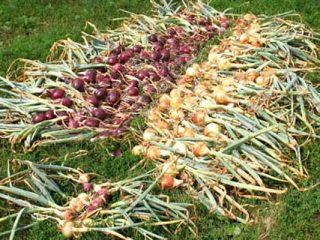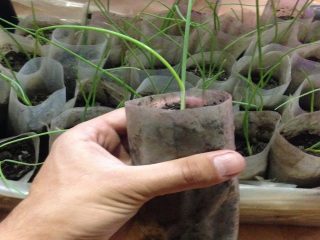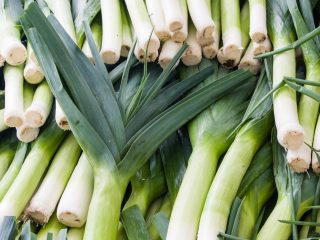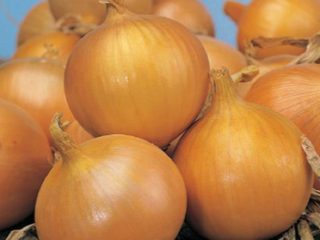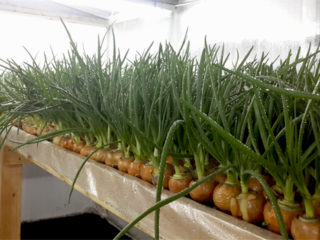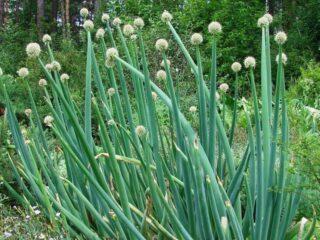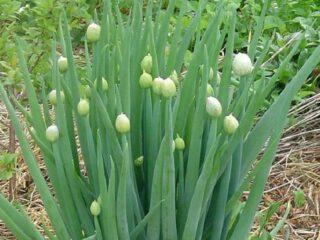Content
Rosanna onion (in some sources it may be called Rossana) is a mid-season variety. Gardeners love it for its unpretentiousness to soil composition, long shelf life, and versatility. To get a high yield of semi-sharp product, it is necessary to take into account some nuances during cultivation.
Origin story
The Rosanna onion was developed by British scientists at the beginning of the 20th century. After crossing with the Roscoff variety, popular in France, the set became suitable for cultivation in the UK. Rosanna quickly gained popularity in Russia, the Middle East, and the USA.
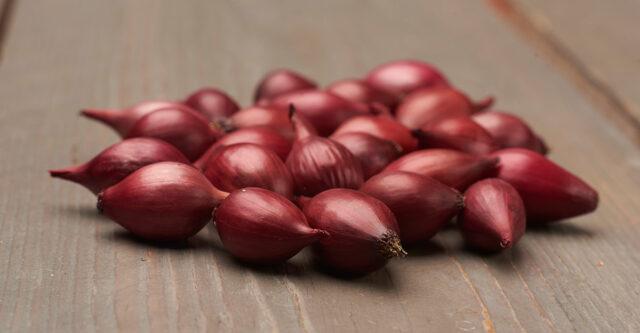
The supplier of seed material to Russia (since 2012) is a Dutch agricultural company
The variety produces a stable harvest in any climatic zone. Depending on the region, the method of cultivation is chosen - seedlings or seedlings.
Description and characteristics of onions of the Rosanna variety
According to the description of the variety, the chemical composition of Rosanna pink onions is rich in vitamins and microelements.It is an excellent remedy in the fight against vitamin deficiency and effectively fights bacteria and viruses.
Appearance
The Rosanna turnip weighs 100-120 g and has a flat-round shape. The diameter of the bulb reaches 8 cm. The upper scales are pinkish-red in color. The pulp is juicy, semi-sharp.
The aerial part is tubular feathers of bright green color. The height of the plant is 30–35 cm.
Productivity
Rosanna is a mid-season variety. It takes 110–120 days from sowing to harvesting. Productivity from 1 m2 ranges from 3 to 5 kg. The taste of onions remains unchanged throughout the entire shelf life - up to eight months.
Resistance to diseases and pests
Failure to follow the rules for caring for Rosanna onions leads to the appearance of ailments:
- Jaundice is a viral disease that cannot be cured. The Rosanna onion turnip stops growing. Affected plants should be removed from the garden bed.
- Gray rot. To avoid the appearance of the disease, it is recommended to treat the beds with a solution of Switch, Bravo or Quadris a week before harvesting.
- Powdery mildew appears on the feathers of Rosanna onions as greenish-yellow spots. The leaves become brittle and the bulb stops growing. To increase Rosanna's immunity, it is recommended to treat plants with fungicides.
The most dangerous pests for the variety are root mites and onion flies. To scare away the latter, carrots are planted next to the beds. If this does not help, resort to insecticides.
Application
Rosanna onions are ideal for making salads, pickles and marinades. The vegetable goes well with meat dishes; onions are especially good in kebabs. During heat treatment, Rosanna onions do not lose their beneficial properties. Therefore, it is added to stews, soups, roasts, and dried.
Advantages and disadvantages
Any vegetable has both advantages and disadvantages. Russian gardeners speak positively about the crop.
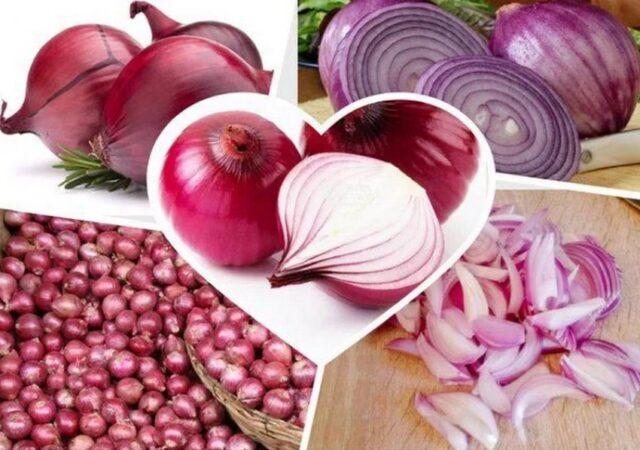
The main advantage of Rosanna onions is their long shelf life.
Advantages:
- unpretentiousness to soil composition;
- high productivity;
- resistance to illnesses.
The disadvantages include the heat-loving nature of the variety. A sharp drop in temperature causes the turnip to stop growing and may die.
Planting onions Rosanna
It is not recommended to grow the Rosanna variety in the same place. Attention! Good predecessors for cultivating onions are tomatoes, cabbage, zucchini, and cucumbers.
To grow Rosanna, choose a flat, well-lit area with fertile soil. It is advisable to place the vegetable bed on a hill.
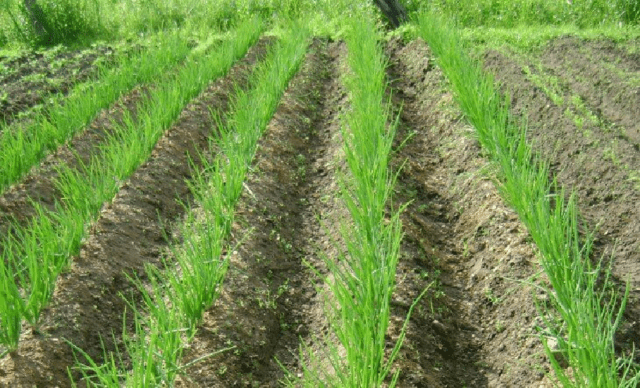
Rosanna onions tolerate drought well, but from excess moisture the root system can rot
In the northern regions, the variety is suitable for growing sets. In the southern regions, seed cultivation is practiced. During the growing season, the onion has time to fully ripen.
Growing from seeds
Rosanna is planted for seedlings in the last ten days of February or early March. To increase the immunity of onions, it is necessary to disinfect the seeds. Planting material is placed in a solution of potassium permanganate for a day and placed in a warm place. Then the nigella is transferred to a damp cloth for a week to germinate. When the sprouts emerge, the planting material is dried.
Any container is suitable for growing seedlings (it is advisable to use a container no higher than 10 cm). Boxes or cups are filled with soil mixture at room temperature. Seeds are sown in furrows to a depth of 3–4 cm and sprinkled with soil. The soil is lightly compacted and watered.The container is covered with cellophane film and placed in a warm place.
When sprouts appear, the cover is removed. In the room with seedlings, the temperature is reduced to +10...+15˚С, providing it with 12 hours of daylight. For preventive purposes, seedlings are sprayed with Prestige every 12–14 days.
Rosanna onions are transferred to open ground 35–40 days after germination. At this point, the root system is sufficiently developed. The most suitable time for replanting is when the soil warms up to a temperature of +10 ˚С. The distance between sprouts is 10 cm, the row spacing is 20–25 cm.
Planting sets
Before you start planting the seed, it is calibrated. Suitable turnips are placed in a warm place for several days (this will help prevent the appearance of shoots). If such a procedure is not possible, it is recommended to alternately pour cold and warm water over the bulbs. After this, the planting material is dried.
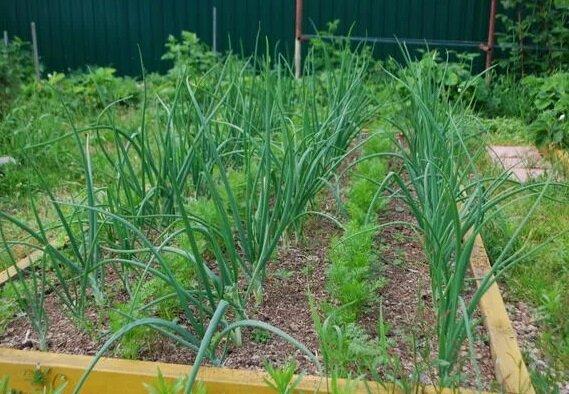
The beds for planting seedlings are prepared in the fall - weeds and other debris are removed, dug up
A week before planting, the soil is treated with a solution of copper sulfate. The onion is placed in the grooves. The row spacing is 20–25 cm, the distance between turnips is at least 10 cm, the depth is 3–5 cm.
Onion care Rosanna
You can achieve a good harvest of Rosanna onions if you water, loosen and fertilize in a timely manner.
Watering
Irrigation is carried out every 10 days. Irrigation by sprinkling is not recommended. This can cause the turnip to rot if liquid gets between the feathers. Watering is stopped 2–3 weeks before harvest.
Loosening
It is best to loosen the soil near the onion heads after each irrigation or rain. This will saturate the soil with oxygen.It is necessary to promptly remove weeds that interfere with the development of onions, taking away beneficial substances from the turnip and shading it from the sun's rays.
Fertilizer application
During the growing season, Rosanna needs two feedings:
- During the period of intensive growth, the beds are watered with a nutrient solution. A tablespoon of urea and a glass of bird droppings are diluted in a bucket of water. Fertilizing is applied at the rate of 3 liters per 1 m2.
- After two weeks, the plants are fertilized again. This time 2 tbsp is dissolved in a bucket of water. l. nitrophoska. At 1 m2 consume 5 liters of solution.
Fertilizers stimulate the growth of onions, but you cannot exceed the recommended norms. This may shorten the shelf life of vegetables.
Harvest and storage
Harvest time is determined by the tops of plants that have dried up and bent to the ground.
It is better to start harvesting in dry weather. The turnip is pulled out of the ground and laid out under a canopy. After a week, the onions are sorted and cleaned of dirt. Large fruits are separated for cooking. It can be trimmed and stored in a net or box, or braided. Small turnips are stored separately and are suitable for planting next year.
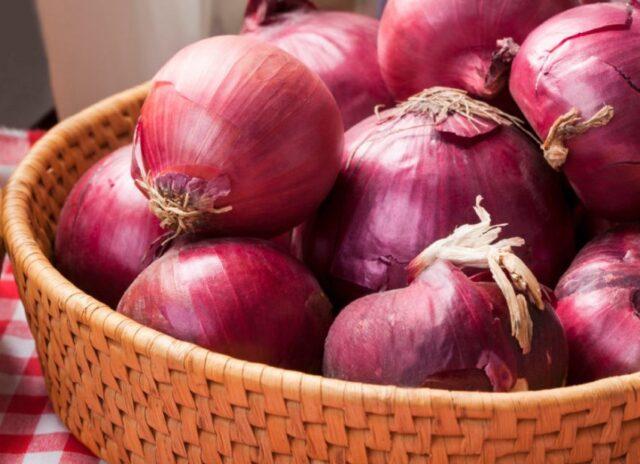
The temperature in the room where vegetables are stored should be from +10 to +15˚С
Conclusion
Gardeners fell in love with Rosanna onions for their mid-ripening nature. It manages to ripen before the August rains. The variety is rich in vitamins and microelements, which helps cope with spring vitamin deficiency. The only drawback is the heat-loving nature.
Reviews from gardeners about Rosanna onions
